 Backend Development
Backend Development Python Tutorial
Python Tutorial Understanding how to use pip to upgrade Python libraries is a prerequisite for upgrading
Understanding how to use pip to upgrade Python libraries is a prerequisite for upgrading
Want to upgrade the Python library? First understand what the pip upgrade command is!
Python is a very popular programming language with a wealth of libraries and extension modules. When developing projects using Python, you often need to install and use various libraries. In order to ensure the stability and security of the project, it is important to upgrade the library in a timely manner. Pip is Python's official package management tool, through which you can easily install, upgrade and delete third-party libraries.
In order to better understand the pip upgrade command, I will introduce the use of pip in detail and give specific code examples.
First of all, we need to understand the basic use of pip. Open a terminal (or command prompt) and enter the following command:
pip --version
This command will display the current pip version information. If you find that your pip version is older and needs to be upgraded, you can use the following command to upgrade pip itself:
pip install --upgrade pip
This command will upgrade pip to the latest version.
Next, we need to know how to use pip to upgrade installed libraries. Use the following command to list all installed libraries and their versions:
pip list
You will see a list of libraries with installed libraries and their versions. If you want to upgrade one of the libraries, you can use the following command:
pip install --upgrade 库名
where the library name is the name of the library you want to upgrade.
In addition, you can also use the following command to upgrade all installed libraries:
pip freeze | grep -v "^-e" | cut -d = -f 1 | xargs -n1 pip install -U
This command will first use pip freeze to generate a list of installed libraries, and then upgrade these libraries one by one. .
Of course, there are some other pip upgrade commands for your reference. For example, use the following command to upgrade a library to the specified version:
pip install 库名==版本号
This command will upgrade the specified library to the specified version.
In addition, you can also use the following command to upgrade a library to the latest pre-release version (i.e. alpha, beta or rc version):
pip install --pre 库名
This command will upgrade the specified library to The latest pre-release version.
To sum up, pip is Python’s official package management tool, through which you can easily install, upgrade and delete third-party libraries. To upgrade pip itself, you can use the command pip install --upgrade pip, and to upgrade the installed library, you can use the command pip install --upgrade library name or the more complex command pip freeze | grep -v "^-e" | cut -d = -f 1 | xargs -n1 pip install -U. In addition, you can use other commands to upgrade to a specific version or the latest pre-release version.
I hope the above introduction will help you understand the pip upgrade command and be able to manage your Python library smoothly. Happy programming!
The above is the detailed content of Understanding how to use pip to upgrade Python libraries is a prerequisite for upgrading. For more information, please follow other related articles on the PHP Chinese website!
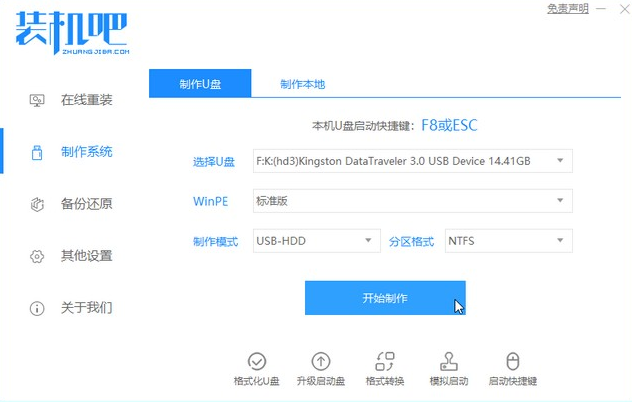 win7系统升级成win10系统怎么升级Jul 11, 2023 am 11:49 AM
win7系统升级成win10系统怎么升级Jul 11, 2023 am 11:49 AMwin10系统已经越来越成熟了,很多win7用户都想把系统升级成win10,但是又不知道如何升级,下面就教大家电脑升级成win10的方法吧。1、浏览器搜索装机吧在线系统重装工具软件并打开,选择制作系统,点击开始制作。2、选择win10系统镜像,然后点击开始制作。3、进入下载文件阶段,请耐心等候。4、等待下载部署完成后,拔除启动盘退出。5、把制作好的启动U盘插到电脑上,开机快速按Esc或Del或F12等进入到Bios设置U盘启动。这里是按F12进入的快速引导菜单,选择U盘进入。6、进入PE系统,选
 win10/11BingService2.0升级是啥win10/11BingService2.0升级內容详细介绍Jul 13, 2023 am 09:41 AM
win10/11BingService2.0升级是啥win10/11BingService2.0升级內容详细介绍Jul 13, 2023 am 09:41 AMwin10/11BingService2.0升级是什么叫最近许多用户满意度的问题,客户们在应用win10和win11的过程中发觉最近升级了个新的服务项目,名叫BingService2.0,这一名字大伙儿第一眼会非常生疏,事实上这一业务是微软的bing搜索的服务项目结合,那麼下边便是实际的win10/11BingService2.0升级內容详细介绍。win10/11BingService2.0升级是啥一些Win11/Win10客户汇报了一个新的神密升级,被分类为品质升级,名字为“Microsoft
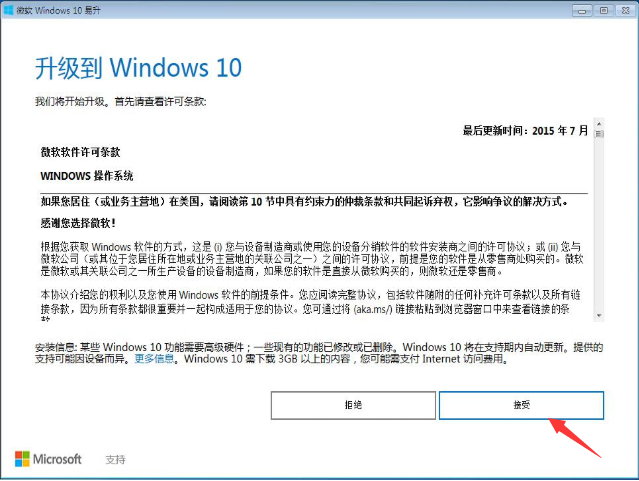 教你如何将windows7升级到win10Jul 12, 2023 pm 04:13 PM
教你如何将windows7升级到win10Jul 12, 2023 pm 04:13 PM随着windows10系统的发布,大部分用户都去升级了系统,不过也有小部分windows7系统的用户觉得win10还不够稳定,依旧观望不升级,最近就有个windows7的用户想要升级到win10系统,那么我们该如何升级呢?接下来小编就把win7升级win10教程分享给大家,快来学习下吧。 windows7升级到win10方法如下: 1.首选我们打开微软官网,升级win10创意者更新的工具易升,点击接受微软软件许可条款。 2.升级工具检测电脑环境是否正常,检测完成后会开始下载win10系
 教大家正版win7怎么升级win10系统Jul 09, 2023 pm 03:33 PM
教大家正版win7怎么升级win10系统Jul 09, 2023 pm 03:33 PM随着windows10操作系统的不断成熟,越来越多的win7系统用户开始使用win10操作系统,那么win7怎么升级到win10呢?1、首先我们在电脑上下载小白一键重装系统,打开选择win10系统安装,重装之前请自行备份好c盘和桌面的数据。2、选择之后会为我们自动下载安装系统所需要的文件,耐心等待注意电脑不要断电断网。3、文件下完之后会提示我们重启电脑,点击立即重启。4、接着来到这个界面,我们选择第二个选项进入pe系统。5、进入pe系统后软件会开始安装win10系统,耐心等待即可。6、接着引导修
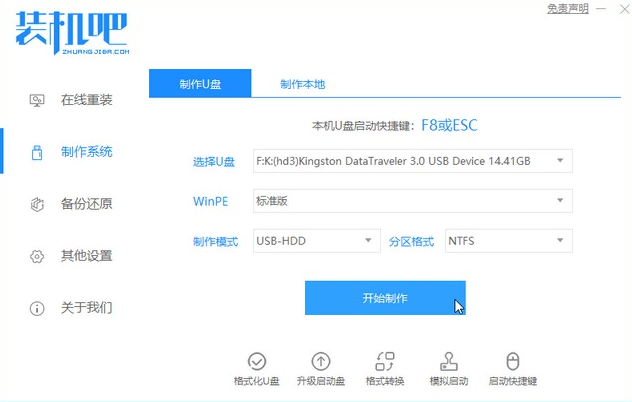 win7如何升级到win10系统Jul 11, 2023 pm 05:29 PM
win7如何升级到win10系统Jul 11, 2023 pm 05:29 PM随着Win10系统的逐步成熟,很多用户已经用上了Win10系统,而一些还在用Windows7的朋友是不是也心动了呢,那么Windows7怎么升级10系统呢?下面一起来看看吧。1、浏览器搜索装机吧在线系统重装工具软件并打开,选择制作系统,点击开始制作。2、选择win10系统镜像,然后点击开始制作。3、进入下载文件阶段,请耐心等候。4、等待下载部署完成后,拔除启动盘退出。5、把制作好的启动U盘插到电脑上,开机快速按Esc或Del或F12等进入到Bios设置U盘启动。这里是按F12进入的快速引导菜单,
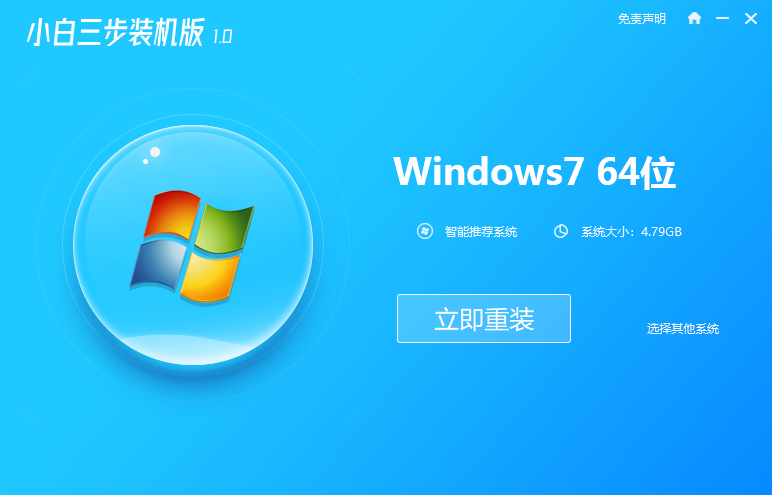 老电脑系统xp升级win7教程步骤Jul 07, 2023 pm 10:21 PM
老电脑系统xp升级win7教程步骤Jul 07, 2023 pm 10:21 PMxp系统曾经是使用最多的系统,不过随着硬件的不断升级,xp系统已经不能发挥硬件的性能,所以很多朋友就想升级win7系统,下面就和大家分享一下老电脑升级win7系统的方法吧。1、在小白一键重装系统官网中下载小白三步装机版软件并打开,软件会自动帮助我们匹配合适的系统,然后点击立即重装。2、接下来软件就会帮助我们直接下载系统镜像,只需要耐心等候即可。3、下载完成后软件会帮助我们直接进行在线重装Windows系统,请根据提示操作。4、安装完成后会提示我们重启,选择立即重启。5、重启后在PE菜单中选择Xi
 win11改win10系统教程的详细介绍Jul 08, 2023 pm 09:21 PM
win11改win10系统教程的详细介绍Jul 08, 2023 pm 09:21 PM微软6月24号正式公布了win11系统,可以看到用户界面、开始菜单等和Windows10X中发现的非常相似。有的朋友在使用预览版的时候发现用的不习惯,想要改win10系统开使用,那么我们要如何操作呢,下面我们就来看看win11改win10系统教程,一起来学习一下吧。1、第一步是从Windows11打开新设置。在这里,您需要转到图像中显示的系统设置。2、在系统设置下,选择“恢复”选项。在这里,您将能够看到“以前版本的窗口”选项。您还可以在它旁边看到一个“返回”按钮,单击此按钮。3、您可以指定要返回
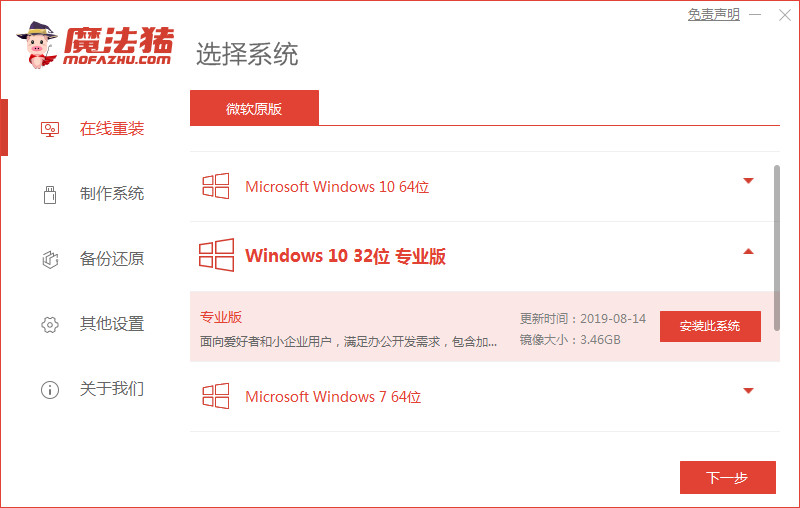 win7升级win10系统具体过程Jul 11, 2023 am 09:37 AM
win7升级win10系统具体过程Jul 11, 2023 am 09:37 AM随着windows10操作系统的不断成熟,越来越多的win7系统用户开始使用win10操作系统,本文也给大家带来一篇win10系统安装过程,一起来看看吧。1、首先我们可以在电脑上下载这个工具,然后选择在线重装,点击安装win10系统,重装之前请自行备份c盘和桌面的数据。2、接着软件就会帮我们下载系统镜像资源,等待它下好即可,注意重装过程不要关闭电脑。3、等待环境部署完成后我们点击立即重启,电脑就会开始重新启动了。4、接着我们来到windows启动管理器,我们选择第二项进入pe系统。5、在pe系统


Hot AI Tools

Undresser.AI Undress
AI-powered app for creating realistic nude photos

AI Clothes Remover
Online AI tool for removing clothes from photos.

Undress AI Tool
Undress images for free

Clothoff.io
AI clothes remover

AI Hentai Generator
Generate AI Hentai for free.

Hot Article

Hot Tools

MinGW - Minimalist GNU for Windows
This project is in the process of being migrated to osdn.net/projects/mingw, you can continue to follow us there. MinGW: A native Windows port of the GNU Compiler Collection (GCC), freely distributable import libraries and header files for building native Windows applications; includes extensions to the MSVC runtime to support C99 functionality. All MinGW software can run on 64-bit Windows platforms.

DVWA
Damn Vulnerable Web App (DVWA) is a PHP/MySQL web application that is very vulnerable. Its main goals are to be an aid for security professionals to test their skills and tools in a legal environment, to help web developers better understand the process of securing web applications, and to help teachers/students teach/learn in a classroom environment Web application security. The goal of DVWA is to practice some of the most common web vulnerabilities through a simple and straightforward interface, with varying degrees of difficulty. Please note that this software

SecLists
SecLists is the ultimate security tester's companion. It is a collection of various types of lists that are frequently used during security assessments, all in one place. SecLists helps make security testing more efficient and productive by conveniently providing all the lists a security tester might need. List types include usernames, passwords, URLs, fuzzing payloads, sensitive data patterns, web shells, and more. The tester can simply pull this repository onto a new test machine and he will have access to every type of list he needs.

WebStorm Mac version
Useful JavaScript development tools

SublimeText3 Linux new version
SublimeText3 Linux latest version





